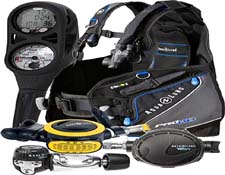

|


|
 |
 |
 |
 |
 |
 |
 |
 |



|
Mexico Just like traveling to other parts of the world, there are some general concepts we suggest you think about while packing your luggage. Follow these suggestions so your visit to Mexico will be a success. Upon Arrival By Air You will receive two forms to fill out before you can enter Mexico. These are normally distributed by the airlines either at the ticket counter or while in transit. I know every airline representative will appreciate this next tip: Bring a ball point pen, preferably black. Don't expect to borrow one. With more than 200 fellow passengers there are never enough to go around. The first form is your temporary visa. The form has recently changed and may not be exactly as shown here. They are in several languages, you'll need one per person. Familiarize yourself with this one to avoid embarrassing mistakes later. Upon arrival at the airport you will first go through Customs, which is a simple review of your documentation and warm greeting from the Mexican Government Official. These are nice people, really! Save the stamped copy of which you will receive to exit the country. Your tourist card will be endorsed for a 30 day stay. If planning to stay more than a couple weeks, be sure to ask for the maximum entry of 180 days. Applying for a longer stay can be a hassle once in Mexico. Play it safe! The second form is for Hacienda which sounds like a nice house to visit, but is actually the Customs and Taxation arm of the government. You will need one of these forms per family. After passing through Immigrations, go to the baggage area and collect your bags then proceed to the exit. Depending on your destination and size of the airport some of the following may differ. Hand the form to the Customs Agent and push the button on the 'traffic light'. Yes, that's right, a traffic light. It is set up to randomly turn green for Go or red for Stop and Inspect. I've never seen it turn yellow, but you may. If you do get a red light, they will kindly ask to see the contents of your bags. I don't think it need be said here, but I will: Don't be so foolish as to bring something illegal into Mexico. You know what I mean! Driving If you are driving into Mexico, check with your auto insurance carrier. Most companies exclude coverage in a foreign country. If you are involved in a traffic accident: Do not loose your temper. You're not in Kansas. - Do not leave the place of the accident. - Cooperate with the legal authorities. - Do not sign any agreements nor accept any liability. - Contact your Mexican insurance company immediately. When to Go The travel industry designates several business seasons during the year, High, Swing or Low. If you are coming from the Northern Climes, you probably consider winter the only time to visit. However, persons from others areas of North America, Europe and including the Mexican nationals find the rest of the year equally enjoyable. They also find it quite a bit more affordable. Take advantage of these somewhat arbitrary dates and save yourself some money. The difference between a High Season vacation and a Swing or Low, may be as little as one day and it could save you hundreds of dollars. Other vacationers just prefer the country when there are fewer tourists. Getting Around the Country Rental Car Rental cars are available from the major rental companies. To rent you must be at least 25 years of age, have a valid driver's license and a major credit card. Be sure to reserve your vehicle before you leave home; this will ensure you the lowest rate and availability. Driving Hitting the byways in a foreign land might sound challenging to some, but to many its their favorite means of getting involved. Especially if you live in the southern reaches of the US, driving deep into Mexico is less than 48 hours away. Gasoline is available at stations throughout Mexico. It is sold in liters (3.78 liters = 1 gallon). Magna Sin (green pumps) is unleaded. Prices are about the same as in the U.S. Only cash is accepted and there is no self service (tips are customary for gasoline attendants). Most stations close by 10 PM. The highway systems between major cities is modern and similar to the freeways further North. What makes them unique is their dependence on toll funding rather than taxation to pay the development cost. So, you should expect to 'pay as you go'. Have a hefty handful of small bills available so you'll encounter no problems with making change. Auto insurance is a MUST, whether you are driving a rental car or your own. Don't expect your hometown agent to supply you with a policy that will be valid in Mexico. Most insurance companies explicitly exclude foreign countries from their coverage. If you have a question, contact your carrier. You will find insurance vendors on both sides of the border crossings. A better idea is to set up your insurance before you go. You might also find that it can be considerably cheaper to do it this way. Major highways are patrolled by Los Angeles Verdes (Green Angels). These government-operated pickup trucks are driven by mechanics . To date, Mexico is the only country with this service. It's free, except for parts and gas! Buses Mexico has a vast inter-city bus system that offers inexpensive, timely and convenient transportation. There are two grades of buses: First Class, with air conditioning and possibly a TV, and a stewardess serving soft drinks and snacks. And Second Class- with no frills. As Second Class costs slightly less than First Class, we recommend you go with First Class. Within the metropolitan centers buses offer the natives their primary means of transportation. For the tourist these can be a bit daunting at first, but when viewed with fun and adventure in mind, they can certainly add color and memories to your vacation. Train Train travel can be safer and more enjoyable than a trip by bus, but considerably more expensive. As with bus service, we recommend you pay for the highest class of travel available. Primera Especial class is recommended for day trips and the top-of-the-line Pullman compartments for overnight travel. Pullman service offers sleeping compartments suitable for one (camarin) or two (alcoba). Each converts to a comfortable sitting room during the day. Weather Considerations Mexico is made up of several different regions, each with its own type of seasonal weather, climate, altitude and terrain dictating what you will need to be prepared and comfortable. Generally, rains fall and temperatures rise from June through October, leaving November through May as the more temperate, drier season. Here's a regional climate overview: - Northern Baja California Despite the desert landscape, this region resembles Southern California: mild winters with a little rain; warm, dry summers. The Sea of Cortes tends to be warmer than the Pacific side of the peninsula. Annual average temperature: 68 degrees F or 20 degrees C. - Southern Baja California A subtropical desert, with over 350 days of sunshine a year, cool winter evenings, low humidity, sea breezes. Summer temperatures can be high, Generally cooler on the Pacific side. Annual average temperature: 77 degrees F or 25 degrees C. - Northwest Coast Similar to Northern Baja, but with more rain and some storms. Annual average temperature: 68 degrees F or 20 degrees C. - West Coast Also known as the Mexican Riviera, it has warm tropical weather year round. Warm, dry days and balmy evenings from November through May. The rainy season is June through October, with daily rain showers and warm temperatures. Annual average temperature: 77 degrees F or 27 degree C. - Central Plateau Due to higher elevation, it has pleasant spring-like conditions most of the year. Rain is frequent from June through September. Evenings can be quite cool in winter. Annual average temperature: 65 degrees F or 18 degrees C. - The Yucatan Peninsula In this region, proximity to the coast determines temperature and humidity. In summer, Gulf and Caribbean areas stay cooler due to trade winds, while interior jungles are humid, with higher temperatures. Rainfall is frequent from April through May and September through January; temperatures can be higher. September and October sometimes bring overcast or rainy conditions. Winters are very pleasant. Annual average temperature: 80 degrees F or 27 degrees C. - The Gulf Coast Somewhat humid, with warmer temperatures. Rainfall and cool brisk northerly winds (nortes) from September through February. Annual average temperature: 72 degrees F or 21 degrees C. What to Bring Be sure to include the following in your suitcase: - A pocket-size English/Spanish dictionary - A small first aid kit - Camera and Film - Walking Shoes - Suntan Lotion - Traveler's Checks & ATM cards - Swim Suits - Casual Dress Clothes for Nightlife and Fine Dining - Copies of your favorite Mexico Travel Guide pages! - Sunglasses & Hat - Necessary medications - Passport/Birth Certificate & Driver's License Health Tips In your quest for a good time on your vacation, your eating and drinking habits are often radically different than what you're used to back home. In addition, climate and altitude changes can throw your system off. To ensure you enjoy your vacation to its fullest, consider the following: Be sure to drink lots of fluids; especially the day before arriving. Try not to go overboard your first night. Give your body a chance to acclimate. Drink only distilled or bottled water. When buying fresh fruits and vegetables, be sure to wash them with distilled or bottled water before eating; peel them if possible. Money, Exchange & Credit Click Here For Currency Exchange The Mexican economy operates on the rise and fall of the Peso. While most businesses will accept foreign currency, especially US dollars, using pesos is your best bet. Foreign currency can be exchanged at one of many casas de cambio (exchange houses). Mexican banking hours are normally Monday-Friday from 9:00 AM to 5:00 P.M. however for money exchange the hours time are normally from 9:00 A.M. to 1:00 P.M. Casas de cambio are open later than most banks and they generally offer quicker service. Credit cards are widely accepted, with Visa, MasterCard, and American Express being the most popular. Check for Current Exchange Rate: Use Xenon Labs' currency exchange calculator to check the Mexican New Peso against your currency. Clicking on the search button will retrieve the current exchange rate for nearly 50 currencies. The rates are usually no more than a couple of days old. Tips for Senior Travelers Retired travelers have a great advantage in planning their vacations. There are many advantages to having the freedom to plan a vacation without the hassles of work schedules. Many older travelers find that their favorite times to travel to Mexico are in off season months when there is less demand and less traffic through the resort cities. Usually the summer months are the least in demand due to high temperatures. This can be an advantage if you enjoy shopping and organized tours more than spending time at the beach. Most shops and tour buses are air-conditioned, so the heat shouldn't be much of a concern. The reduced numbers of tourists in the summer months makes getting around much easier, and there is usually more peace and quiet at night. There are a number of discount packages and group tour options for seniors. Your travel agent should have a list of the discounts that you're entitled to in the city that you'll be visiting. There are a number of senior citizens tour clubs that offer members the opportunity to go on tours with a familiar group of people in an organized tour that provides everything that you'll need. There are many senior citizen tour organizations across the nation, most of which your travel agent should be able to provide information about. Even if you don't like traveling in groups or with organized tours, you are entitled to a number of senior citizens discounts. When booking hotel reservations, always mention that you're a senior and ask about discount rates. At restaurants, mention it when you order, not afterward. Many places will refuse the discount if you don't mention it before a reservation or an order has been made. The infrastructure in Mexico is not as well-developed as it is in some countries. If you have a disability, you may find it difficult getting around some parts of Mexico. There are few wheelchair ramps and wheelchair access bathrooms in Mexico currently. In some cities, there aren't even stairway handrails. The sidewalks are typically narrower and aren't maintained as well. If you have any problems getting around, speak with your travel agent about the state of the city you'll be traveling to. Your travel agent should also be able to provide information about hotels which offer accommodations for people with disabilities. |
| DiveGuide.com Scuba Diving Vacations & Dive Holidays - Book direct dive travel with scuba diving operators, resorts, dive liveaboard yachts and dive travel representatives worldwide. We provide free scuba diving information for the traveling diver on vacation and holiday in and to scuba diver destinations around the world. |












|